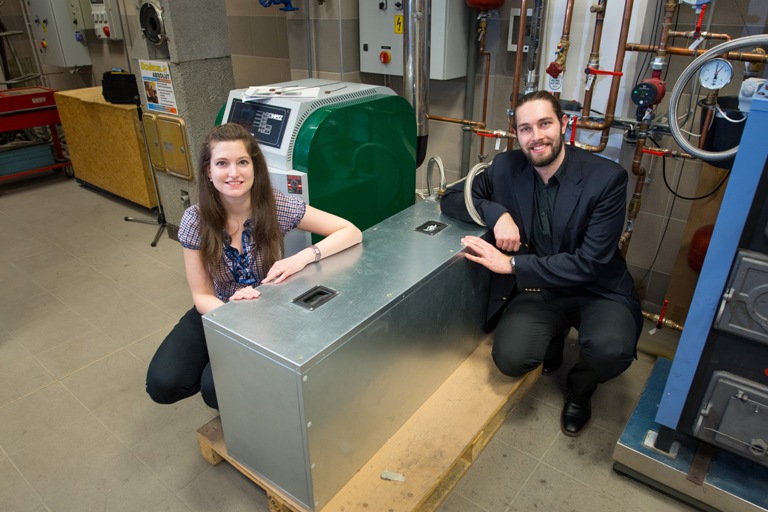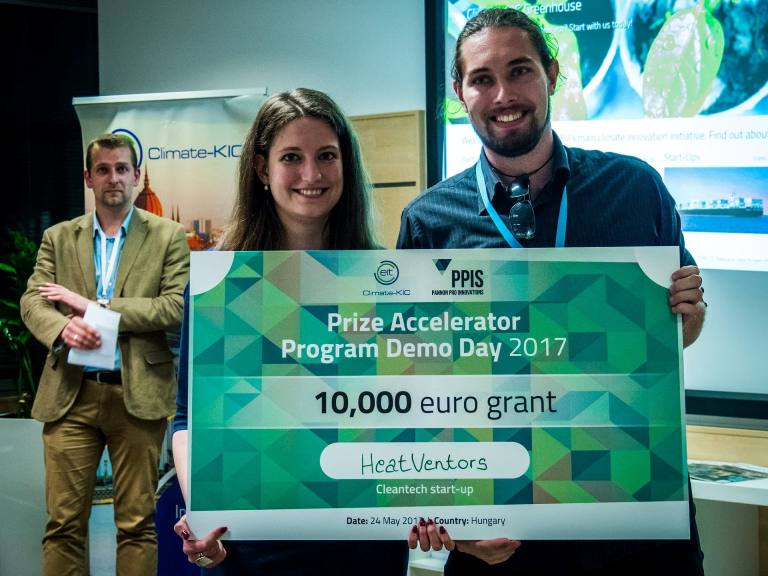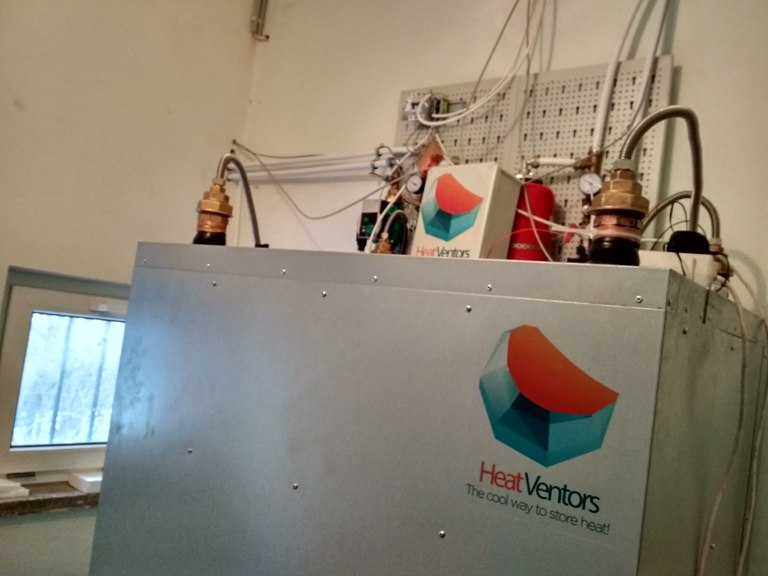News feed
“A student science paper starts a lifelong career”
2019. 06. 06.Young BME graduate engineer couple develops revolutionary technology and designs equipment to cool telecommunication and data centres.
”Our heat generation and storage unit based on phase change helps reduce energy use by up to 30-40% and offers a return on investment in 2.4 to 4 years. As our device is ten times smaller than traditional water tanks, it has also significant space-saving benefits,” said Zoltán Andrássy, building services engineer and PhD student at the Department of Building Services and Process Engineering at BME's Faculty of Mechanical Engineering (GPK) and his wife, Rita Farkas, mechanical engineer with chemistry specialisation of HeatTank, their ground breaking innovation. The young professionals built a startup business based on their idea and have been refining it for seven years now. They named themselves HeatVentors combining the words ”heat” and ”inventors” to express the original nature of their innovation, which is currently being introduced in a special area to cool data centres, server parks and telecommunication sites.

”Through the use of efficient thermal energy storage methods, Europe could save 20 billion euros and reduce its CO2 emissions by roughly 250 million tons a year. Electricity consumption rates are the most significant as the advancement of digital technologies has led to increasing demand from telecommunication companies and data centres, where constant cooling is necessary: efficient data transmission requires permanent air conditioning with an optimal temperature range of 24 to 28 °C as higher temperatures could easily result in computer failure,” said the young BME graduates describing the fundamental technical problem. They have found that traditional coolers have the lowest efficiency when they are most needed, i.e. when the external temperature is high, consequently they believe that an appropriate thermal energy storage method could effectively address this problem.
As a solution, the HeatVentors team proposes their patented technology which is based on phase change. Their device contains a phase change material, which melts and then freezes allowing the most optimal energy storage. Their system performs most efficiently when the external temperature is low (e.g. at night) storing the energy generated during that time for periods when the external temperature is high and requires more intense cooling. To complete their technology, the engineer spouses also try to benefit from the method of free-cooling method using cold external air instead of the cooling system to reduce the indoor temperature when the weather is warmer.
They also developed the design of their heat storage device and personally monitor the manufacturing process. Rita and Zoltán developed the software of the device and its algorithm which generates data to assess energy consumption. ”We supply our partners with custom made devices. The HeatTank is a modular design allowing, the addition of further units, and we offer a complete plan to our users based on the assessment of the facility to be equipped with air conditioning and the identification of specific customer needs,” said the creators describing their innovation. Their current product portfolio includes 4 standard size tanks ranging from 10 to 500 kWh using 6-8 different phase change materials. The services Rita and Zoltán offer include not only the sale and installation of the equipment but also, if required, technical advice and the analysis of the energy status of facilities, preparing energy reports, monitoring the operation of energy systems and the amount of energy saved.
”In Hungary, ours is one of the first projects to rethink industrial heat storage methods. Seven years ago, this problem was still in its infancy and this was one of the reasons why we began this research. It took several years to build the first prototype but our efforts were worth it,” they said remembering the beginnings. They presented their device at several domestic and international competitions for students, members of scientific students' associations, young researchers and startups winning top places every time and attracting the attention of many investors. One of their investors is KIC InnoEnergy, which offers them financial and technical support. As one of the awardees of the international final of the Women Startup Competition Europe, Rita was invited to visit four Chinese factories and present their innovation to attract potential future business opportunities.

|
The results of the HeatVentors team at technical competitions Technical competitions: Business/startup competitions: |
The young engineers recently finished a pilot project to test their prototype at a base station of MVM NET a key infrastructure supplier for large commercial users. Rita and Zoltán installed a 0.5 cubic metre heat tank into the facility's air conditioning system. The equipment operated in winter and spring while its summertime operation was imitated using their 98% accurate modelling algorithm and simulations allowing them to analyse the operation of the HeatTank based on data for one whole year. The device controlled the temperature in the room for 8 to 10 hours supplying emergency cooling if required. The HeatTank is a much more environmentally friendly solution than traditional coolers as it has a lower CO2 emission rate and is produced without the use of any inflammable materials and components adversely affecting human health. The BME alumni are very hopeful that the successful test results of their prototype will allow the use of their heat storage equipment in office buildings, power plants, chemical and food companies and production plants in the future.

Rita and Zoltán think it is important to present their findings to the academic community as well. Zoltán Andrássy is studying this topic as part of his PhD programme at BME's Faculty of Mechanical Engineering and together with Rita has already published 17 international scientific publications on their research. In addition to the engineering challenges, the protection of their intellectual property was an important issue: Their novelty search in 2017 found that no other technology fully identical with the method of HeatVentors is available on the market. They patented their unique heat storage tank and are now working to extend their proprietary rights internationally. They also patented the control algorithm and the data centre applicability of their system. They are planning to submit a new patent application in 2019 analysing additional utilisation options and the behaviour of new phase change materials.
”You can only be successful if you're ready to step out of your comfort zone. We have both committed our lives to HeatVentors and we believe in our success,” the married couple, who now spend all their free time improving their innovation and developing their business, said. ”Apart from our marriage, our innovation also connects us bringing us even closer to each other. We are fortunate that our job is also our passion and we can rely on each other in difficult times or when facing technical issues.” They share the responsibilities of their startup business: Rita Farkas earlier worked for a multinational company in a financial and engineering position and tries to use her experiences in their own business while Zoltán primarily focuses on research and engineering tasks as technical director. They both remember their former professors who proposed this research topic seven years ago and started them on their scientific career with enormous respect and gratitude. ”The advice we received from our mentors and the knowledge we acquired at the university helped us make our dreams come true. The greatest reward for an engineer is when they can work on realising their own ideas. While the idea was born seven years ago, we did not think at the time that the topic of a student science paper would become our lifelong career,” said Rita and Zoltán in summary adding that they are currently expanding their business and will begin growing their market and client base in a few weeks' time with new colleagues.
TZS-GI
Photo: Zoltán Andrássy, Rita Farkas
